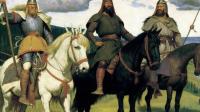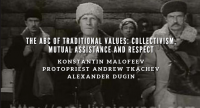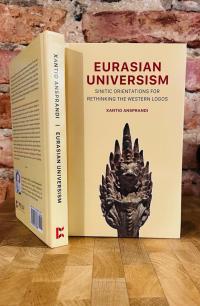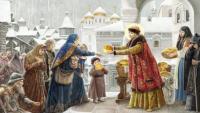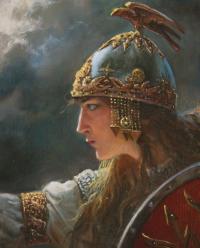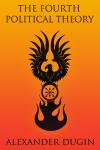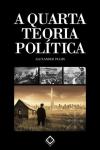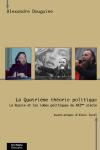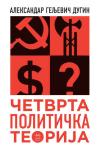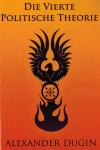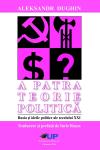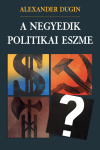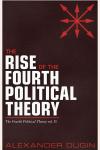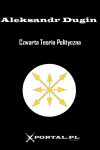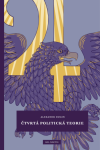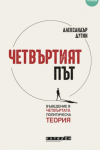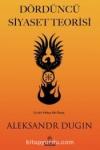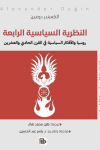Sociological Paradigms and the Russian Gender
The specifics of conducting this survey are to describe the opinion of the 'netizens' [Editor's note: literally, 'netizen' is the fusion of the English words net and citizen, i.e. 'network' and 'citizen', thus translatable as 'net citizen'], the 'Internet Russians'. Are there many of them? Yes, they are many. In sociological terms, Russians can be divided into two categories: 'TV Russians' and 'Internet Russians', which differ significantly in their attitudes.
The concept of foreign policy as the apotheosis of multipolarism and the catechism of sovereignty
On 31 March, Russian President Vladimir Putin approved a new foreign policy concept. This document can be seen as the final agreement of those changes in the geopolitical and civic consciousness of the Russian authorities that began 23 years ago with Putin's rise to power. Only now, in this version, Russia's foreign policy doctrine takes on a sharply contrasting and unambiguous appearance. This time it is unambiguous and unambiguous.
The Wagner Factor and the Thesis of Justice
This war is a war for justice. It is being waged against evil and violence, against lies and deceit, against cruelty and imposture. Yet, if this is the case, then it is directed not only against the direct enemy, that is Ukrainian Nazism and the globalist liberal West supporting it, but also against the injustice that is at times being done inside Russia itself. Wagner’s war is a people’s war, a liberation war, a purifying war. It does not accept half measures, agreements, compromises, and negotiations behind the backs of fighting heroes. Wagner PMC values life very highly: both its own and the enemy’s. And it values death — the only cost for which Victory is afforded, that for which only death can be paid, and nothing else.
IS THE FOURTH POLITICAL THEORY JUST ANOTHER IDEOLOGY?
The Fourth Political Theory (and Eurasianism as its geopolitical - geocultural field of application) is not another ideology, nor an ideological synthesis on the existing ideologies of modernity, such as, for example, National-Bolshevism. This would imply that it is nothing but another subjectivity of Modern rationalism. The Fourth Political Theory is a broader political thesis-expression belonging to a deeper layer of political philosophy, as Professor Dugin described it very graphically in the book “Political Platonism”.
Mircea Eliade: Sacred and Existential Politics
Preparing this report... In fact, it was Dasha (Daria Dugina) who had invited me to come and get involved in the Council. She suggested that I talk about Luciano Blaga, because Alexander Dugin had talked about him in the context of the Fourth Way and existential politics. But I decided to make a report on Eliade, although for some reason it seemed unexpected and fortunately is in the context of the topic brought up by Nikita Syundyukov. And it seems to me now that the report and the subject it deals with have become, to put it immodestly, somewhat practical, but for some reason it has also dealt with these subjects: sacrifice, Easter, somehow, history... So let's get down to the report itself. I assume Daria is supposed to be mentioned at the end of the report without any special dedications to her at the beginning, since it turned out that the entire report was actually dedicated to her.
Erdogan facing the ultimate test
In Turkey, the date of the presidential elections has been announced. This is likely to be Erdogan's toughest test yet and internally - the strengthening of the neo-liberal pro-Western opposition (especially the Republican People's Party), a split within the Justice and Development Party (AKP) itself, a severe economic slowdown, inflation, the aftermath of a monstrous earthquake. On the external front, the intensifying conflict with the United States and the European Union and the increasingly strong rejection of Erdogan's policies by the globalist leadership in the White House.
Associations and Reflections around Tradition and Future Shock
What makes technogenic civilization and the era of Modernity and Postmodernity so attractive to the ordinary person, to the overwhelming majority? Why do they assume such to be the pinnacle reached by mankind, and drawing on the “indubitable” ideas of progress and evolution, why do they draw out its prospects to even greater, happy heights, in contrast to the point of view expressed in this book, Tradition and Future Shock: Visions of a Future that Isn’t Ours, according to which these heights are but nightmarish abysses and infernal darkness?
The ABC of traditional values: Justice
Justice is a very important word for the Russian people. Perhaps, even the key word. In the days of the World Assembly of the Russian People, when His Holiness the Patriarch sought a definition of what the Soviet period brought to the treasury of our history, of our thinking, the key word was 'justice'. Indeed, there was justice in the Soviet period, and it is because of it that people today warmly remember those years. Yes, there were many faults, but there was much more justice than before the revolution, and even more than today.
The new Russian ideology is born in the Donbass
Today the ideology of Russia acquiring its own identity is being born in you, in the Russian Donbass. My daughter died for a great Russia at the hands of Ukrainian terrorists. Not long before, she had returned from her new territories (Daria had been to Mariupol, Kherson, Melitopol, Lugansk and Donetsk) and shared her impressions. In her lecture, she said: "Even we patriots, convinced supporters and champions of Russian Peace, ideologists and inspirers of the Russian Spring, think here in Moscow that Novorossia needs us. But in reality it does not. What can we teach Novorossia, when its sons and daughters, adults and children, have gone through such a crucible of historical trials to become a true Russian people. They are the Russian world.
The main mistakes of the Special Military Operation
A year has passed since the start of Special Military Operation. If at first it was a special military operation, it is now clear that Russia has found itself in a real and difficult war. Not only with Ukraine - as a regime and not as a people (hence the initial call for political denazification), but also with the collective West, i.e. essentially with the NATO bloc (with the exception of the special position of Turkey and Hungary who seek to remain neutral in the conflict - the rest of the Alliance countries are participating in the war alongside Ukraine in one way or another).
Russia is coming out of anaesthesia: six phases of Special Military Operation
The first abrupt phase was marked by Russian successes: during it, Russian forces overran Sumy, Chernigov and reached Kiev from the north, arousing the fury of the West. Moscow proved its seriousness in liberating the Donbass and, with a quick escape from Crimea, established control over two more regions, Kherson and Zaporozhye, as well as part of the Kharkov region.
The formula of the Russian way
The picture is as follows. The Clinton, Bush Jr. and Obama administrations, as well as the Biden administration, have supported and continue to support liberalism in international relations. They see the world as global and governed by a world government through the heads of all nation states. Even the United States is nothing more than a temporary tool in the hands of a cosmopolitan world elite. Hence the aversion and even hatred of Democrats and globalists for any form of American patriotism and for the very traditional identity of Americans.
Eurasian Cosmic Cartography
Certainly one of the most unique and challenging works of this year is the complex esoteric-philosophical-political treatise by the Italian Xantio Ansprandi, Eurasian Universism: Sinitic Orientations for Rethinking the Western Logos (PRAV Publishing), which, as its subtitle suggests, draws ”Sinitic orientations” for a Eurasian cosmic map that is emerging from the shadows of the Western philosophical tradition.
The ABC of traditional values: The Unity of the Peoples of Russia
This is a direct reference to the Eurasian conception of Russian history. The Eurasianists were those Russian philosophers who drew attention to the fact that the destiny of Russia is, first of all, the destiny of the Russian people, who founded the power, created the culture, developed the language, but, at the same time, would be incomplete and imperfect if the other nations did not tie their destinies to the Russian people.
Who are Russia and Ukraine actually fighting?
Many wonder why the Ukrainians resist so fiercely? Because they are not at war with us, but with the image they live in their minds. There was an episode of the TV series 'Black Mirror' in which people fought with terrible monsters, but it turned out that they were monsters made so by special optical devices that the people themselves had to wear (punishment for non-compliance) and what looked like 'monsters' were the people themselves.
The ABC of traditional values: Mercy
Mercy is a very important phenomenon, it has no measure. If justice can be measured - an eye for an eye, a tooth for a tooth - mercy cannot be measured, because it is always something more. It is always excessive. This is, in a sense, undeserved. We speak of mercy, for example, when we spare a defeated enemy. Perhaps, from the point of view of justice, he should be punished or even executed, but we pity him, and therein lies the undeserved mercy. This is the basis of Christianity.
Censorship: The Metaphaysics of Sovereign Culture
The topic of censorship is not only highly topical for our society (especially in the context of the SMO), but also philosophically fundamental. Contemporary Western culture increasingly resorts to censorship, despite trying to present liberalism as the abolition of all censorship criteria. In reality, what is censorship if not the most radical form of censoring any idea, image, doctrine, work or thought that does not fit into the narrow and increasingly exclusivist dogma of the 'open society'?
The limit of Russian patience
The story of the Hague Tribunal is symbolic. Russia has never before wondered what kind of institution it is. In reality, it is part of the implementation of World Government, a supranational political system created over nation states that are invited to cede part of their sovereignty to this structure.
Censorship: The Metaphaysics of Sovereign Culture
The topic of censorship is not only highly topical for our society (especially in the context of the SMO), but also philosophically fundamental. Contemporary Western culture increasingly resorts to censorship, despite trying to present liberalism as the abolition of all censorship criteria. In reality, what is censorship if not the most radical form of censoring any idea, image, doctrine, work or thought that does not fit into the narrow and increasingly exclusivist dogma of the 'open society'?
Liberalism is more dangerous than Ukrainian Nazism
There is not and cannot be a neutral position in this war, there are only two camps. That is all. Anyone who hesitates or is undecided, sooner or later (I think much sooner than it seems) will be forced to take up arms and simply go to the front, and the front today is everywhere. It is impossible to bring this long, difficult and terrible war back to where it was before 24 February 2022, nor can it be stopped, it can only be won. Or it can still be consigned to human history. Then there are no winners. Death will win.
Russian victory in Ukraine will mean dawn of multipolar world - Dugin | RT Exclusive
In an exclusive interview, RT talks with prominent Russian political philosopher Aleksandr Dugin on the Ukraine conflict and the changes an ultimate Russian victory would bring to the world.
Divine Logos, rebellion against liberal dictatorship and the evil fate of post-humanism
In December 2022, the A.M. Katz State Concert Hall in Novosibirsk hosted the First Siberian Forum of WRNS with the participation of the heads of the Government of the Novosibirsk Region and the Novosibirsk Metropolia of the Russian Orthodox Church. Among the speakers at the event was the most famous philosopher of modern Russia, Alexander Dugin, with whom Leaders Today correspondent Alexander Zonov spoke shortly afterwards in Moscow. We would like to thank Evgeny Tsybizov, co-chairman of the Russian People's World Council and head of the Tsargrad NGO, for his help with the organisation.
Electronic golem and electronic dove
Yes, the success of artificial intelligence, this “electronic golem” is really amazing. To take and write an impeccable article, and soon, I have no doubt, to not only write an article, but to come up with a topic, an idea and a style that the author was going to think about is amazing. But to be honest, it doesn't really scare me.
George Soros's last speech: the "open society" wars and climate as a combatant in the conflict
First of all Soros provides definitions of "open" and "closed" societies. In the open societies the State protects the freedom of the individual. In the closed ones, the individual serves the interests of the State. In theory, this corresponds to the opposition of Western liberal democracy and traditional society (whatever that may be). Moreover, in the field of International Relations (IR) this corresponds exactly to the polemic between liberals in IR and realists in IR.
The ABC of traditional values: historical memory and intergenerational continuity
In the next part of our 'ABC of traditional values' we will talk about the letter 'I' - historical memory and intergenerational continuity. What is more important than this traditional value if we want to achieve all the others? After all, if we lose our historical memory, if we become like the one who does not remember his kinship, then, in general, it will not matter what we have planned before.
The unexpected truth about the billions 'stolen' from Russia
One of the most popular and debated arguments is the West's theft of Russia's foreign reserves and, consequently, the blaming of the liberal bloc government for placing them. I am far from a supporter of liberalism, in fact I am an irreconcilable opponent of it, but it is still worth getting to the bottom of the myths and propaganda.
The ABC of traditional values: patriotism, citizenship, service to the motherland
We present the third part of a new project by the Russian TV channel Tsargrad, 'The ABC of Traditional Values', a series of talks by three Russian thinkers: Konstantin Malofeev, Alexander Dugin and Protopriest Andrei Tkachev. Today's talk examines one of the most important spiritual and moral values from the list of 'Fundamentals of State Policy' approved by Presidential Decree 809. We are talking about patriotism, citizenship, service to the Fatherland and responsibility for its destiny.
Partisans of culture
I have noticed that certain registers of understanding are rapidly disappearing in society. It is as if the spectrum of waves on which people communicate - references, quotations, examples, the minimum obvious set of references, including rhetorical figures, references to seemingly obvious cascades of knowledge (in history, culture, art, science, philosophy, politics) - is constantly and irreversibly shrinking.
Dugin's guideline: The Dualism of the Spiritual World
In the second part of his anthropological study, Russian philosopher Aleksandr Dugin draws analogies between the material and spiritual worlds, between the worlds of humans and angels. The dualism discussed in the first part of the analysis is characteristic not only of humanity, but also of angels. How does it work in both worlds?










